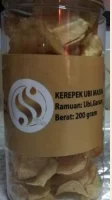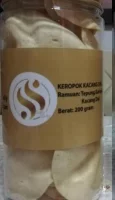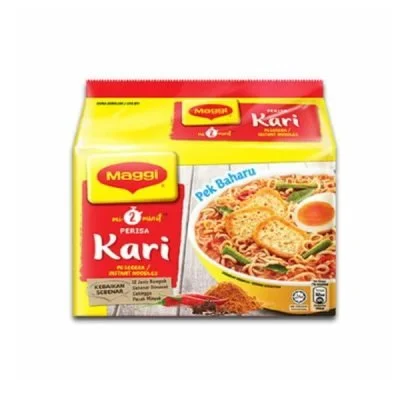Subtotal:
£5.50
Join Our WhatsApp Community and Enjoy Exclusive Benefits!
Click Here
Join Our WhatsApp Community and Enjoy Exclusive Benefits!
Click Here
Join Our WhatsApp Community and Enjoy Exclusive Benefits!
Click Here
PAH PIN’S POT MUSHROOM RENDANG (READY-TO-EAT) By Hamdans Family Enterprise (Pack of 3) - MY Delivery
£15.00
9 people are viewing this product right now
In stock
Pack of 3 – Each pack weighs 225g
Pah Pin’s Pot mushroom rendang is halal, vegan and best of all, ready-to-eat. Using a recipe that’s been handed down for generations and typically served during festive seasons and gatherings. It is now made available for everyone to enjoy anytime.
This mushroom rendang is simply nutritious and wholesome for the entire family. Made lovingly using only natural ingredients, with no preservatives and MSG. Above all, what gives the extra ‘umphh’ in this dish are the pesticide-free oyster mushrooms.
It can be kept in the freezer for up to 3 months. Once opened, it must be kept refrigerated and consumed within 5 days. Just reheat and serve with steamed rice or porridge. It goes well as a topping for your favourite kinds of pasta too.
Who doesn’t enjoy good rendang with all the goodness and fragrance of the traditional spices and herbs? Grab one pack today and satisfy your craving for a good rendang. Pah Pin’s Pot Mushroom Rendang is sure to please even the more hard-to-please taste-buds.
Ingredients:
Mushroom, Onion, Garlic, Ginger, Galangal, Tumeric, Lemongrass, Tumeric Leaves, Coconut Milk, Toasted Coconut Paste, Chilli, Oil, Salt And Sugar.
What is …?
Traditionally rendang is made with meat and cooked with coconut milk, galangal, lemongrass, kaffir lime leaves and other spices.
One of the specific signature dishes mixtures of western and Malaysian culture is mushroom rendang, traditionally served at ceremonial occasions to honour guests during festive events; such as wedding feasts and Hari Raya (Eid al-Fitr). Rendang is also traditionally served among the Malay community in Malaysia,
Various recipes of rendang usually are served as hot and spicy condiments for dishes, such as lalab (raw vegetables), Ikan Bakar (grilled fish), ikan goreng (fried fish), Ayam goreng (fried chicken), Ayam penyet (smashed chicken), iga penyet (ribs) and various Soto soup. There are 212 variants of sambal in Indonesia, with most of them originated from Java.
Rendang Composition & Cooking Method
Rendang is often described as slow-cooked meat in coconut milk and spices. The cooking technique flourished because of its role in preserving meat in a tropical climate. Prior to refrigeration technology, this style of cooking enabled the preservation of a large amount of meat.
The cut of beef suitable for rendang is lean meat of the rear leg of the cattle; i.e. topside or ground beef, which is considered perfect for slow cooking.
Rendang is rich in spices. Along with the main meat ingredient, rendang uses coconut milk and a paste of mixed ground spices, including ginger, galangal, turmeric leaves, lemongrass, garlic, shallots, chillis and other spices. This spice mixture is called pemasak in Minangkabau. The spices, garlic, shallot, ginger and galangal used in rendang have antimicrobial properties and serve as natural organic preservatives. If cooked properly, dry rendang can last for as long as four weeks.
Traditionally the term rendang does not refer to a certain type of dish. The verb merendang actually refers to a method of slow cooking; continuously churning the ingredients in a pot or frying pan, on a small fire, until all of the liquids evaporate and the meat is well done. Traditional Padang rendang takes hours to cook. Cooking rendang involves pounding and grinding ingredients as well as slow cooking, and so is time-consuming and requires patience. The meat pieces are slowly cooked in coconut milk and spices until almost all the liquid is gone, allowing the meat to become tender and absorb the condiments. The cooking process changes from boiling to frying, as the liquid evaporates and the coconut milk turns to coconut oil. Cooking the meat until tender with almost all the liquid evaporated requires great care, keeping it from getting burnt. Because of its generous use of numerous spices, rendang is known for having a complex and unique taste.
If Rendang Maman is not what you’re looking for click here. To discover a whole new other Malaysian dishes.
To see more products from Halal Street UK, click the link below.
HALAL STREET UK FOOD PRODUCTS
| Weight | 0.675 kg |
|---|
Be the first to review “PAH PIN’S POT MUSHROOM RENDANG (READY-TO-EAT) By Hamdans Family Enterprise (Pack of 3) - MY Delivery” Cancel reply
This site uses Akismet to reduce spam. Learn how your comment data is processed.
No product has been found!
Related products
Save 50%
SPICY CHILLI SAUCE ‘MAKANLAGI’ By Duoreqa 9 Enterprise - MY Delivery
Sold by Duoreqa 9 EnterprisePeople also bought
Our Services

Authentic Malaysian Products
Select from over 700 Halal & Muslim Malaysian Products.
Secure Payment
Safe & Secure Payment
Support 24/7
Whatsapp 24 Hours Day
SPECIAL PRODUCT
Dendeng Daging (75gram) by Mannas Kitchen - UK Delivery
Sold by Halal Street UK0 Days
0 Hours
0 Minutes
0 Seconds
























Reviews
There are no reviews yet